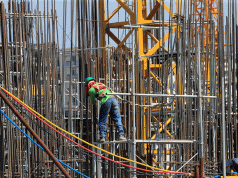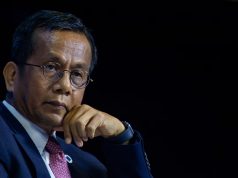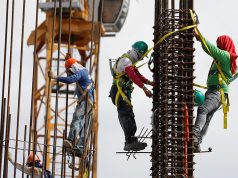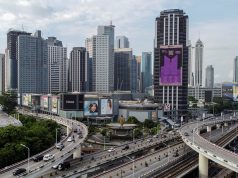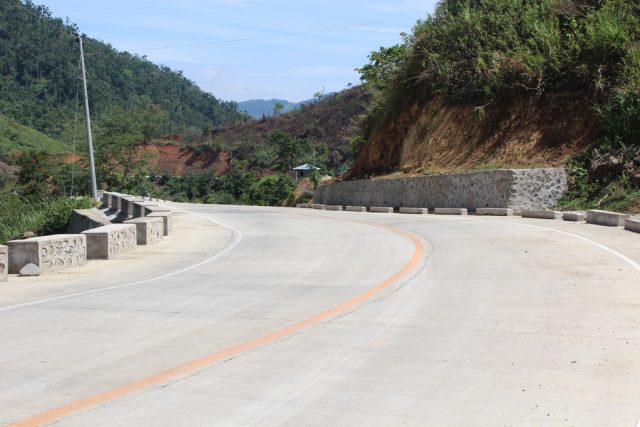
SINGAPORE – The Duterte administration expects to sustain the economy’s growth rate at 7 percent over the medium term through an ambitious “Build, Build, Build” program that will generate “an impressive multiplier effect” through more jobs and investments, finally closing the country’s infrastructure backlog, Finance Secretary Carlos Dominguez III has said here.
At a recent briefing on the Philippine economy organized by the Standard Chartered Bank at the Mandarin Oriental, Dominguez said a sizable portion of the Duterte administration’s unprecedented infra spending will go to the country’s poorest provinces to open up investment opportunities and rev up the economies in these areas.
To enable the government to pursue this infrastructure program dubbed as “Build, Build, Build” while maintaining fiscal discipline, the Duterte administration has endorsed the congressional approval of its tax reform program that aims to improve tax administration and at the same time guarantee a steady revenue flow to support its high — and inclusive — growth agenda, Dominguez said.
“We are building an economy that the next generation of Filipinos deserves. It is an economy that cares for the environment, an economy that will allow our people’s many talents to blossom. I invite you to be part of this great enterprise,” he added.
Aside from Dominguez, National Economic and Development Authority chief Ernesto Pernia, Budget Secretary Benjamin Diokno and Bangko Sentral ng Pilipinas Governor Nestor Espenilla Jr., also presented the Philippine government’s medium-term economic strategy and programs on the Duterte watch.
Executive Secretary Salvador Medialdea, along with Jaime Augusto Zobel de Ayala, chairman and CEO of Ayala Corporation; George Barcelon, president of the Philippine Chamber of Commerce and Industry; Ronie Ganguly, director and Asian credit portfolio manager of Blackrock SG Ltd; and David Mann, managing director and chief economist for Asia of Standard Chartered Bank later joined the panel discussion on the Philippine economy.
“We are looking to sustain a growth rate in the vicinity of 7 percent well into the medium term. That effort will be driven in part by an ambitious infrastructure modernization program which we call ‘Build, Build, Build.’ This program will have an impressive multiplier effect on the domestic economy. It will create jobs, draw investments and improve efficiency throughout the archipelago,” Dominguez said.
In the same forum, Espenilla discussed the financial sector reforms that the BSP will continue to implement, while Diokno emphasized the reforms in national budgeting that the government is now undertaking.
Pernia described as “game-changing” the 75 flagship infrastructure projects of the Duterte administration.
Zobel said now is “an exciting time for our economy.” He also noted that the Philippine business sector is “massively supporting” the proposed tax reform program of the government.
Barcelon, for his part, said: “The President has really put his heart into attracting foreign investments. The Philippines is ready for business.”
Ganguly, meanwhile, highlighted the stability of the Philippines’ growth outlook and the vast investment opportunities available here, especially with the government embarking on a massive infra build up.
Dominguez said the Philippines’ economic strategy takes advantage of the country’s benign debt conditions, low-interest rates, investment-grade credit ratings, and improvements in the ease of doing business that the Duterte administration will continue to enhance by streamlining government operations and cutting red tape.
The finance chief said that over the remaining five and a half years of the Duterte administration, it has programmed over US$170 billion in infrastructure spending, of which US $23 billion will go to the infra program next year.
“A significant portion of the programmed funds will be drawn from Official Development Assistance (ODA) lending which, on the average, carries interest charges a full percentage point below the best the market offers,” Dominguez said.
“A good portion of the infrastructure spending will go to the poorest provinces. They will open up numerous investment opportunities. I urge all of you to examine these. I look forward to many partnerships and joint ventures as we guide our economic growth towards inclusiveness and sustainability,” he added.
Dominguez said from 2010 to 2016, national government debt as a percentage of GDP declined from 52.4 percent to 42.2 percent, which is lower than the ASEAN average of 46 percent and the emerging market’s average of 47 percent.
Government revenues allotted to servicing interest payments, meanwhile, declined from 24.4 percent in 2010 to 13.8 percent by the end of this year, he noted.
Also, from 2010 to 2016, the Philippines moved up 49 notches in the World Bank’s Ease of Doing Business Index and improved 57 notches in the Heritage Foundation’s Index of Economic Freedom.
In the same period, the country received 24 positive credit rating actions from the various rating agencies, “with the help, of course, of Standard Chartered Bank,” Dominguez said. “The Philippines currently holds investment-grade rating, with a credit default swap lower than its ASEAN peers,” he added.
“One year into the administration of Rodrigo Roa Duterte, the country is more optimistic about its growth prospects. The Philippines posted a GDP growth rate of 6.9% in 2016. In the first quarter of this year, we posted a growth rate of 6.4 percent. We lead the Southeast Asian region in the pace of economic expansion,” Dominguez said.




